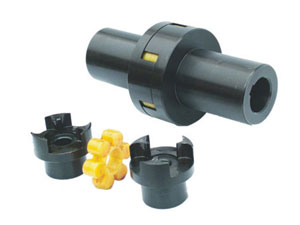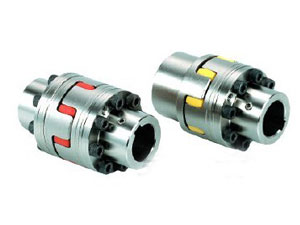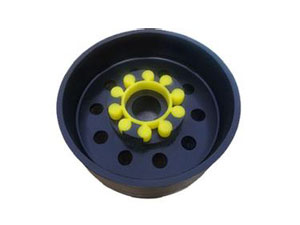Common faults of diaphragm coupling are as follows
Common faults of diaphragm coupling are as follows
XNUMX. Abnormal sound failure
(1) The gap between the two halves of the coupling is too wide, causing the diaphragm to receive a greater axial force, which will wear the stranded holes or stranded bolts and cause abnormal noise.
(2) Excessive axial offset or too large deflection angle of the two coupling halves will also cause vibration and abnormal noise during equipment operation.
(3) The difference between the speed of the active end and the passive end will also cause vibration and abnormal noise during the operation of the equipment.
(4) The speed code disc of the motor is faulty, which causes the speed of the motor to be fast and slow, and the diaphragm coupling makes abnormal noise.
XNUMX. Misaligned installation
The misalignment of the bearings on both sides of the coupling and the two ends of the system has a great influence on the static characteristics of the system support, which will reduce the vibration isolation effect, gradually deteriorate the stability of the system, and then affect the service life of the diaphragm coupling.
Three commonly used methods of alignment:
(1) Single table method, suitable for the alignment of the relative position of each axis in the cold state, the distance between the two halves of the coupling is long, and the coupling diameter is small;
(2) The double-meter method is suitable for the alignment of the unit in the horizontal state when the shafts of the mechanical equipment are in the cold state;
(3) The three-meter method is suitable for the alignment of multi-segment units and the cold state of each axis is in a horizontal position.
Third, the diaphragm is damaged
The diaphragm is the key element of the diaphragm flexible coupling. The diaphragm is in a complex state of stress when it is working, and its fatigue life determines the normal service life of the diaphragm coupling.Tensile fracture of the connecting hole ends at both ends and the instability and bending deformation of the diaphragm under pressure are common manifestations of diaphragm damage.
Measures: Regularly check and repair the diaphragm to ensure stable transmission performance.
Four, bolt damage and deflection
The laminated diaphragm coupling bolt set is used in the working condition of frequent start and large load. Once the working stress exceeds the bolt can withstand, it will cause fatigue and fracture, which will eventually lead to damage to the laminated diaphragm coupling.
Measures:
(1) Strictly pay attention to the processing quality of bolt undercut grooves during design, and strictly control the metallurgical quality and heat treatment process of the bolt material to improve the fatigue strength of the bolt;
(2) The installation of laminated diaphragm couplings must strictly control the installation accuracy, reduce the angular deviation, radial deviation, and axial compression or tension between the two halves of the coupling, and strictly control the movement of the coupling. Balance accuracy, reduce vibration, thereby reduce the alternating cyclic stress of the bolt group, and control the pre-tightening force of the installation bolt within the specified range;
(3) Vibration monitoring devices should be installed at the coupling work site to give an alarm in time when abnormalities occur to avoid short-term overload and prevent further damage.




